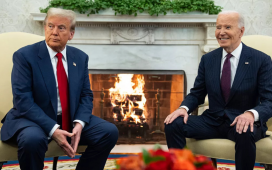There is a close inter-relationship between the culture and the economy. Our economy was an important factor for our glorious civilization and cultural heritage. The reverse also held true – our cultural content contributed to our strong economy. If India has to assume global leadership position again, it has to be an economic power first. We can use our cultural wealth to catalyze India’s economy.
India’s potential in the field of culture is immense. However, there is a lack of understanding on how to put this accumulated cultural wealth over millennia to achieve economic growth. For realizing the true potential of India’s imbedded cultural content, and identifying variables and their interrelationship for evidence based decision making and resource allocations, we have to work on multiple dimensions of cultural economy; what are its performance and potential Indicators, how monetization can lead to unlocking valuations of cultural activities, what are its financial requisites to be fulfilled by innovative financial instruments for sustainability. According to a study only about 20% of cultural organizations worldwide consider themselves financially sustainable.
Government is an important driver of any initiative. Therefore Cultural Economic Governance assumes great importance at the stage of policy formulation and its implementation. Cultural sector directly employs about 45 lakh people as artisans, performers, tourism guides etc. In addition, handicrafts and traditional art industries provide employment to about 60 lakh people. Through introduction of new curriculum and vocational studies in the education system, the government has to work on skilling and capacity building of these stakeholders. According to a report by the Ministry of Rural Development, only 10% of rural artisans have access to formal training programs. It is estimated that capacity building initiatives in cultural sectors can lead to a 20-30% increase in productivity and revenue for cultural enterprises. A survey conducted by UNESCO found that 70% of traditional artisans feel their skills are not aligned with current market demand.
Establishing social and economic linkages for performing arts can propel growth in all art forms, contributing to huge employment and revenue generation. The Indian film industry alone contributes around Rs 180,000 crore annually to the economy but its global potential is still unexploited. Yoga in the USA has become a 15 billion USD business annually. Is there a way to ensure that the economic benefits of the wider acceptance of Yoga flows to India? All these and other important sectors have to be extensively worked on.
The civilisational wealth that we have inherited from our ancestors can be put to use only after we start taking pride in them. We are fortunate that, with the rise of aspirational Indians, there is a revival of pride in our cultural traditions and civilization values in the country. Initiatives like building Ram temple at Ayodhya; its ambitious redevelopment project, costing over Rs 85,000 crore is to be completed by 2031 transforming the city to accommodate a footfall of around 3 lakh pilgrims daily. Kashi Vishwanath Temple had 20,000-30,000 daily visitors before redevelopment; after the revamp, the daily number of visitors increased to 1.5-2 lakh. There are approximately 2 million temples across India, in addition to their religious and spiritual importance, temples were designed to serve as commercial centres attracting tourists/pilgrims and support business activities in the areas of retail, transportation, and hospitality. Festivals in India are estimated to contribute Rs 2 lakh crore annually. According to a CII report, Kumbh Mela in 2019 generated business over Rs 1.2 lakh crore whereas the State of UP had to spend only Rs. 4,200 crores for the event.Prime Minister Modi is working on realizing this vision further by setting up Tamil Cultural Centers across the globe and showcasing India’s diverse and vibrant cultural heritage to the world leaders through the G20 platform. India has 42 UNESCO World Heritage Sites as of now. A total of 46 new projects have been sanctioned and 27 new pilgrimage sites have been identified across India for development of infrastructure and tourist amenities for enriching the religious tourism experience under the PRASHAD scheme of the Central government. Spiritual and religious tourism in India commands a significant portion of the travel and tourism sector, holding a 30% market share and accounting for 60% of the domestic tourism market.What we require is to develop a comprehensive Cultural Economic Model. This Model will serve as a catalyst for our nation’s economic growth, till we become a developed nation by the year 2047. Our cultural economic model will also be a case-study for other economies to emulate and propel their own economic growth using their social and cultural wealth.
The author is National Spokesperson of BJP.
(Views expressed are personal.)











